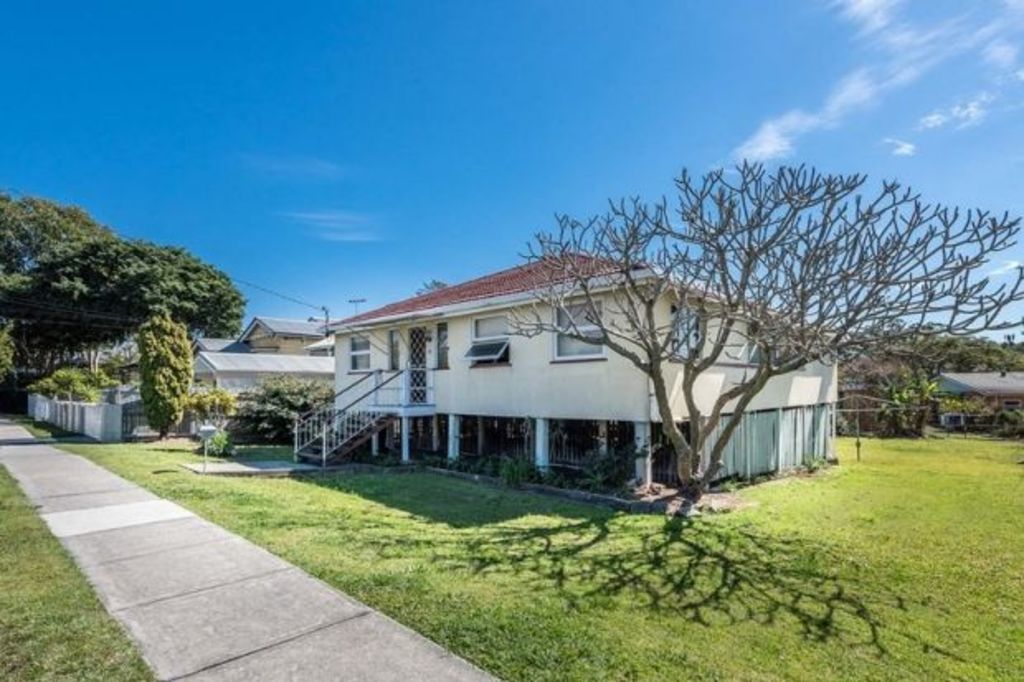Brisbane buyers: Crazy for run-down homes, despite the skyrocketing cost of renovating

The cost of building in Queensland may be climbing at the fastest rate in Australia but that’s not stopping Brisbane renovators from hunting down the most run-down opportunities across the city.
Economist Michael Matusik recently published researched which showed construction costs have risen by five per cent over the past year alone — the highest rise of anywhere in the country.
Despite this, unrenovated properties remain some of the most sought-after real estate in Brisbane.
Ivo Kornel, principal of Belle Property New Farm, got an unrenovated house at 153 Kent Street under contract in only two days.
Entry level buying in the postcode will set you back just over $1 million.
He says the demand for properties needing to be fully renovated is insatiable.
“Renovators are snapped up everywhere, in every suburb,” he says. “I think the dream to do everything your own way is the biggest driver.”
Shane Hicks of Place Estate Agents Bulimba recently listed 26 Frank Street, Norman Park, which has been in the one family — and seen very little upgrades — since 1925.
It’s going to auction this Saturday, September 9, but Mr Hicks says he could have sold it the first weekend it listed.
“You’re always guaranteed to get a great amount of interest with a renovator,” he says.
- Related: Renos of our dreams or houses of our nightmares?
- Related: How to flip a home in less than one year
- Related: We’re getting smarter at renovating Queenslanders
“The appeal is that they present an opportunity, it’s a way to get into a suburb that you otherwise couldn’t afford. People either do them up straight away before living in them but many people will live in them for five years before doing any renovations.”
Mr Hicks says there is potential to snag a bargain when buying a rundown property: “This house at Norman Park is an opportunity and it’ll likely be the cheapest place in the suburb, on 809 square metres, in recent years.”
And it seems the blanker the canvas, the more it’s worth. Jesse James of Harcourts Solutions sells around Newmarket, Wilston and Grange and says it’s routine for buyers in these areas to buy an original house and then drop $600,000 on renovating it.
“A renovator in a desirable position just goes crazy,” he says. “And a blank canvas is more efficient as buyers don’t have to undo someone else’s work. So, blank canvas, good location: people go crazy.”
According to the ABS, Australians spent a record $7.7 billion on home renovations during the 2015/2016 financial year, representing a jump of $1 billion from the previous two financial years.
However Mr Kornel says renovating is not always immediately financially rewarding. He warns buyers to “know their stuff” before leaping in.
“The smart buying is to buy someone else’s work,” he says.
“Often the amount of money you have to spend on renovating, including renting while you’re renovating and all the other holding costs associated with it like the six months waiting for development approvals, which can get pushed back even further if the neighbours push back, can all make the costs of skyrocket.”
Mr James says there is still great money to be made by regular mum and dad renovators though, provided they choose properties that don’t need structural improvement.
“I know of two houses at Wilston that were bought in the mid-to-high $900,000s, that were subsequently renovated with no structural work done, that both sold for $1.6 million to $1.7 million,” he says.
“They were renovated with high-end finishes, new kitchens and bathrooms, with $200,000 spent on each of them, tops. So you can see there’s still a lot of money to be made if you know what you’re doing.”
Mr Hicks says there are three main points that buyers should remember if they’re in the market for a renovator:
1) Most buyers are looking for a blank canvas. Half done properties are always harder to sell. The more original, the better. “Buyers don’t like to pay for — and subsequently rip out — someone else’s work,” he says.
2) Renovated products are in extremely high demand, especially in suburbs dominated by white collar workers who are cash-rich and time poor. “In a suburb like Norman Park, which houses ex-politicians amongst others, there is a huge appetite for fully renovated homes because these people simply do not have time. They can afford to pay for someone else’s work,” he says.
3) You need to have a passion for project management. Big renovations suit certain types of people who thrive on the process and have a love for restoring old homes, Mr Hicks says.
We recommend
States
Capital Cities
Capital Cities - Rentals
Popular Areas
Allhomes
More







